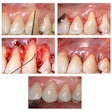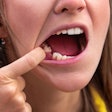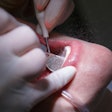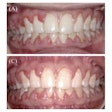
It happens more often than any of us would like to think. A patient enters a healthcare facility for a minor procedure, but leaves with a much more severe issue to contend with after he or she has been exposed to contaminated instruments or supplies and develops a bacterial infection.
In a recent study in the Journal of the American Dental Association (November 2011, Vol. 142:11, p. 1269-1274), researchers from the Indiana University School of Dentistry (IUSD) found that bacterial contamination of impression guns occurred easily in the course of normal clinical usage and disinfection.
They also tested several processes for eliminating bacteria, and concluded that steam sterilization used in conjunction with impression gun covers and disinfection after each use resulted in fewer bacterial colonies.
Impression guns don't fall neatly into Spaulding's classification system for patient care items with regard to risk of spreading infection, the study authors noted. While the guns' single-use tips are considered semicritical because they come into contact with nonintact skin and mucous membranes, the rest of the guns are considered noncritical because they do not come into contact with the patient.
Nonetheless, impression guns are prone to contamination due to frequent handling by the dental practitioners, whose gloved hands frequently enter patients' mouths.
4 impression guns tested
For this study, the researchers used four dental impression material handgun cartridge dispensers (all Garant 2 4:1/10:1 dispensers, 3M ESPE). At the IUSD predoctoral Comprehensive Care Clinic, each gun was used about 10 times per week. While the school has no official environmental asepsis policy for impression guns, clinical assistants follow the recommended spray-wipe-spay technique using commercial surface disinfectants.
Four sites on each gun were sampled: the trigger, handle, release button, and latch. Sterile cotton swabs moistened with saline were used to sweep each site, and specimen culturing was used to determine the total number of bacterial colonies.
The researchers conducted five different experiments. The first served as a control and was termed "routine use." For this experiment, the four test guns were subjected to typical use and disinfection procedures for three weeks. The guns were picked up from a clean dispensing area, used, and then given to a dental assistant to be disinfected. Sampling and culturing were then performed.
Prior to the second experiment, the guns were steam cleaned. The dental assistants then performed the spray-wipe-spray method to disinfect the guns as they were normally used in the clinic. After three weeks, the researchers collected the guns and employed a wipe-discard-wipe technique on them before sampling and culturing.
In the third experiment, the researchers used one of the clinic's large-volume, high-vacuum steam sterilizers on the guns. When they were finished being processed, the guns were sampled and cultures were performed.
In the fourth experiment, the guns were steam sterilized again and routinely used for three weeks at the clinic. However, in this experiment, the only infection prevention method used by clinicians and students were disposable Metrex TotalCare plastic impression gun covers (Kerr Dental). After three weeks, samples were taken and cultures performed.
The final experiment combined methods after the initial steam sterilization. Gun covers were employed, and the dental assistants cleaned and disinfected the guns in the usual way after each use. Sampling and culturing took place after three weeks.
Contamination in the clinic
"Three weeks of routine clinical use and infection prevention measures followed by disinfection did little to reduce bacterial contamination," the researchers wrote. Roughly the same degree of contamination was present at all four sites. Both Staphylococcus aureus and methicillin-resistant Staphylococcus aureus (MRSA) were present before and after disinfection.
"All of the sampling sites had at least one MRSA isolate," the authors noted.
No bacterial isolates were found in samples taken immediately after steam sterilization. A 60% reduction in bacterial contamination was observed when initial steam sterilization was followed by the usage of a plastic gun cover during procedures compared with routine disinfection. Interestingly, when disinfection was added to that procedure, a 95% reduction in contamination compared with routine disinfection was observed. Researchers did not find any MRSA isolates either.
"Impression guns could be sources of cross-contamination," the researchers wrote. "The results of our study support this assertion."
Given that the U.S. Centers for Disease Control and Prevention has no guidelines for disinfecting impression guns, and that it is hard to determine what sort of procedures individual dental practices follow, it is clear that a single disinfection procedure appears incapable of markedly reducing bacterial contamination on impression guns after clinical use, the researchers noted.
Steam sterilization was very effective in the course of the study. While impression gun covers reduced contamination by 60%, it did not eliminate MRSA. The last method tested, steam sterilization followed by regular usage of gun covers and disinfection, was the most effective and can keep contamination at bay at a relatively low cost, the researchers concluded.



















